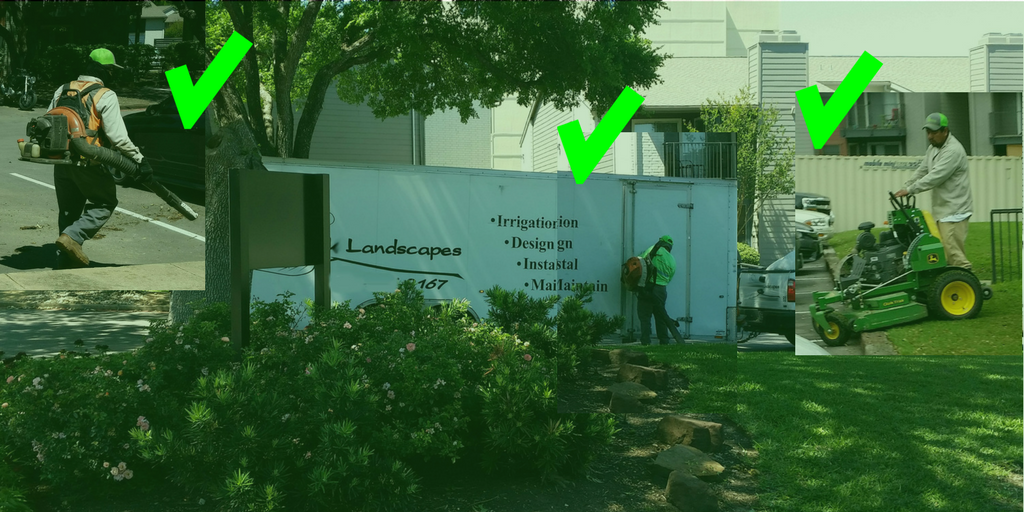What should you sell?
Who is your ideal customer?
Answering these two questions is part of clearly stating your growth strategy. Communicating the answers throughout the company provides great focus to your sales team and the rest of your employees. The result of this clarity should be greater efficiency, innovation, and profitability – keys to your growth strategy.
I introduced these two questions in the last blog post, and I listed the following ten factors to guide your answers. Today, I will explain three of these factors and how they strengthen your growth strategy.
- Investor expectations (if you do not own 100% of the business)
- Personal ambition, goals, and tolerance for risk
- Personal experiences, network, skills and abilities
- Your key employees’ experiences, networks, skills and abilities
- The business’ current product or service offering
- Market growth in your target markets
- Competition in your target markets
- Cash requirements and cash availability
- The possibility of superior profits
- Exit strategy and timing
Investor Expectations
For most of my readers, the CEO and the owner is the same person – meaning that there are no outside investor expectations to consider. If there are outside investors, then the analysis must consider their opinions and expectations. No doubt that investors have certain expectations when they invest. The CEO must consider and address these expectations if there is going to be a significant change in the way the company conducts its business.
The Three People Factors
For a discussion of the remaining nine factors, I am going to assume that the CEO owns 100% of the business. The first three factors are the People Factors.
Personal Ambition
Let’s start with you, the CEO / Owner. You have already achieved a lot. You had a dream or ambition to be a business owner, and you either purchased or built a company. No doubt there were some personal aspects as to why you wanted to be a business owner. Hopefully, you are enjoying those benefits – some of the fruits of your labor.
I always ask CEOs the following questions when we begin the discussion about working together and their growth strategy:
- What are your goals?
- What do you want the company to look like in 5-10 years?
- What do you want your days to look like in 5-10 years?
I ask these questions to identify whether they have conflicting goals and to determine whether the timing is right for our services.
Many owners (myself included) have goal conflict. We have ambitions or goals that are mutually exclusive. Working through these goal conflicts helps focus the company and ensure that the company that you own and operate is one that meets your goals.
During an initial meeting, one client told me that he wanted to start a company to build devices and grow the company to a point where his kids could work with him in the company. Since startup companies that build devices require a huge amount of investment, I asked him where he was going to get the money. He planned to raise it from venture capital firms. This situation is a great example of goal conflict. He could not create a company with venture capital and hope to operate it long enough to have his kids work with him in the company. Venture capitalists want to exit a company as quickly as possible; they are not long-term owners.
He had to make a choice.
He chose to take the investor money.
Then, as we discussed the core problem that he wanted to solve through his business, we discovered that the core problem was solved by software, not hardware. While creating devices was attractive to him, he realized his primary goal was solving the problem. Since creating devices was costly, he changed to focus solely on a software solution, reducing his need for investor cash. The company created great software, received some critical patents, and made a successful exit some years later.
Resolving the goal conflicts helped the founder adjust his expectations and increase his focus on what he should sell — software.
The clearer that you can be about what you want personally, the easier it will be to determine what the company should sell and to define the ideal customer.
Risk Tolerance
The other extremely personal matter to consider is tolerance of risk. Some people enjoy taking big risks and others hate risk. To own any business, you must be willing to embrace some risk. I think of real estate developers who look at a large green field and imagine an office building development or a shopping center. I marvel at their ability to imagine and to embrace risk. I cannot do either well. Knowing your tolerance for risk also helps you to consider the remaining factors. Planning to accept more risk than you can tolerate may lead to second-guessing decisions and changing direction before there is an opportunity to see the success of the original direction.
To determine your risk tolerance, ask the following questions:
- Am I willing to lose one year’s profit because of a change in business strategy? What about three years’ profit?
- Am I willing to guarantee a loan to obtain capital to grow the company?
- How long am I willing to wait to see positive results from a change in my growth strategy? (The longer you are willing to wait, the higher your tolerance for risk.)
Your Experience, Network & Skills
For an experienced business owner, the next factor is probably obvious. Consider your experiences, network, skills, and abilities (i.e. strengths). The company should sell products or services to customers that leverage your strengths. That statement does not mean that you must excel at everything the business does; you can hire people to supplement your strengths. However, it would be foolish to operate a business that does not use your strengths.
As you choose what to sell and which types of customers to target, considering your strengths will lead to greater personal satisfaction and probably greater profitability.
Key Employees
The last people factor is your key employees. Just as you consider your strengths, you want to consider the experiences, network, skills, and abilities of your key employees. What strengths do they have and how do those strengths influence what you sell and to whom you sell it?

Landscape Business Example
Let’s use a landscape business as an example of how to apply these three people factors in defining the ideal customer.
It is rare (probably non-existent in larger markets) for a company to be successful selling landscape services to both residential and commercial customers. Selling to and serving a homeowner is very different from selling to and serving a property manager. The needs and wants of these two customer types differ significantly. Essentially, you would need two different management teams with two sets of processes, equipment, and employees to serve both types of customers efficiently.
One of my clients purchased a company that had residential and commercial customers. First, he analyzed his personal ambitions and goals as well as the team’s background and experiences. Then, he determined that his growth strategy meant making changes to his landscape service offerings. He had difficulty making the decision, because the residential business had high gross profit margins.
Initially, he believed that he needed the residential customers to help pay for his overhead. We discussed the fact that while the gross profit margins (i.e. the percentages) were high, the gross profit dollars probably did not cover that much of the overhead for the commercial part of the business. We also discussed selling the residential part of the business to another company so that he could get some cash to help bridge some of the possible loss. Together, we did some analysis and created a plan that was within his tolerance for risk. The result was a company with a much greater focus.
To be clear, defining the ideal customer in a landscape business goes far beyond just residential or commercial. Commercial landscaping can be segmented into apartments, condominiums, office, industrial, homeowner associations, and retail. Even some of those customers can be segmented into class A, class B or class C. If you are optimizing for efficiency and profitability, then you want to target customers as narrowly as possible without having a market that is too small for you to reach the company growth goals. If you are optimizing for growth, then you want to define your customers broadly.
One Other Important Note for Your Growth Strategy
Define your product or service offering and your ideal customer for the next few years – it is not forever. Once you conquer the market for one product or service offering and one customer type, then you can add new people and expand. It is just difficult for a company to get really good at multiple product or service offerings and customer types at the same time. Such an approach demands a lot of time, energy and cash from the CEO. Sometimes, it is just impossible.
In the next blog post, I review the three Market Factors that answer these questions:
What should you sell?
Who is your ideal customer?
Over the next two weeks, consider your ambitions, goals, risk tolerance and strengths.
What do they tell you about answering the two questions above?



